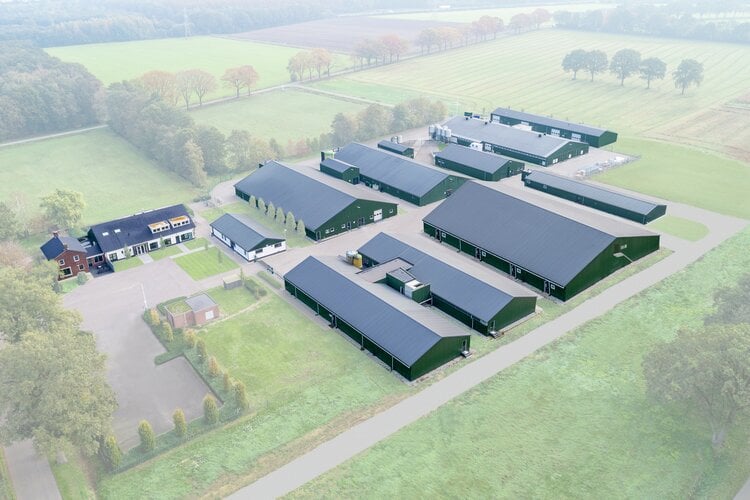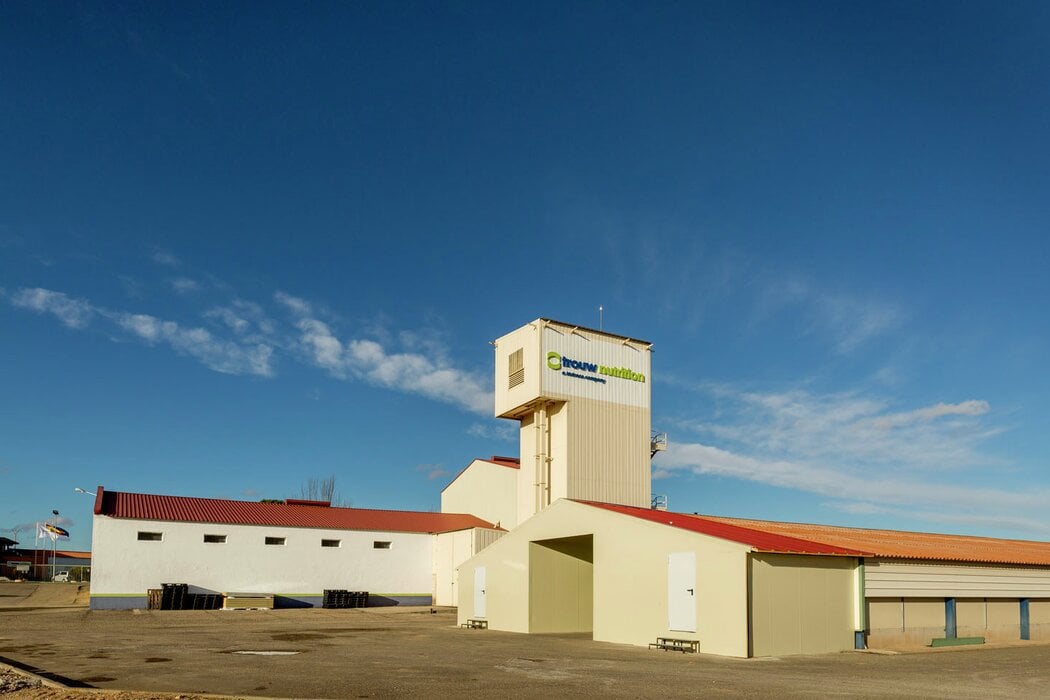Trouw Nutrition’s unmatched approach to early-life nutrition
- Global innovation
How our technical expertise sets us apart
Early life nutrition is an important focus area for innovation at Trouw Nutrition, Nutreco’s livestock feed business line. And no wonder – it’s an area where we have unmatched expertise, that truly sets us apart from the competition, and that helps us towards achieving our purpose of Feeding the Future. We talked to the heads of our ruminant, swine and poultry research centres about why we’re different, how we built our young animal feed business into a unique competitive advantage, and what it means for our future.

Riding the revolution to lead in quality calf nutrition
It all started with ruminants. “About ten years ago, there was a revolution, as scientists started to discover that feeding a calf better would lead to a healthier and more productive dairy cow,” said Dr. Javier Martín-Tereso, Manager of our Ruminant Research Centre. “We saw that as a big opportunity to improve calf nutrition, meriting all our research efforts. Instead of just lowering the cost of calf nutrition, we radically changed our focus to the healthy development of these future dairy cows. We wanted to lead on that, to be the best in the science to strengthen our leading brands.” To reach this goal, the team used the infant nutrition industry, with its very high standards of product quality and nutritional value, as their reference. Then their extensive, innovative research made it easier to connect with academia and build our reputation for leading the industry on early life nutrition.
“We built a team of experts and invested into our customised research facilities; academics know there are things we can do there that they can’t do elsewhere,” said Javier. For example, the facility has electronic feeding systems tailored-made for the team’s research that can feed calves multiple combinations of milks and feeding programs. “We also developed unique techniques to study the nutritional competence and metabolic development of calves. This capability, used in our strategic research programs, results in nutritional technologies that have made Sprayfo and Milkivit the global leading brands in heifer calf nutrition.”
These techniques also help with surplus calf research, which works to improve the healthy development of calves born to dairy cows. “It is now possible to produce beef from the secondary value streams of the dairy system,” said Javier. “These include these calves as well as the by-products of butter and cheese production, combined with our unique resource – fat concentrates for calf milk replacers made at our factory in Sloten, Friesland.” He said that the circular nature of milk replacer feeding helps us lower the environmental footprint of cattle and makes milk and beef more sustainable.
Integrating sow and piglet nutrition for better long-term health and productivity
Our swine team has also been working on early-life nutrition for more than a decade. Their more recent efforts are focused not only on the young piglet itself but on integrating sow and piglet nutrition so that one supports the other – a focus that alone differentiates our offering from the competition. “We see that the nutrition of the sow impacts the vitality of the piglets, all the way from the gestational period through to weaning,” said Dr. Hubért van Hees, Manager of our Swine Research Centre, “and we integrate this understanding into our Milkiwean and LifeStart Sow solutions.”
The swine research facility enables the team to work at various stages along the life cycle, from early conception, through piglet birth and lactation, into the nursery, and even up to slaughter. They can monitor individual feed and water intake directly after weaning – something most other companies can’t do. And the facility allows them to mimic different management conditions on the farm to study their effects. “We can, of course, create optimal management conditions, but we can also modify elements in the immediate environment – including heat, cold, or even pathogenic stress – to study how piglets react and how we can help them deal with these stressors through the right nutrition,” said Hubért.
Another aspect of the swine team’s research that is unique to our company is the way the team studied the feeding patterns and diet of pigs in the wild to both help inform their research and also realise new opportunities in young animal nutrition. “We try to link what nature tells us about optimal piglet development, especially in our vital start program, where we look at the healthy growth of piglets and how to stimulate the early development of their organs with the right nutrition.”

Making the most of the early days of a chick’s life
Young animal feed makes a lot of sense for cows and pigs, which have a long production cycle. But what about chickens? The total production cycle for a broiler is 35-42 days, so what does early life mean for poultry? “We started by trying to figure this out,” said Dr. Ana Isabel Garcia, Manager of our Poultry Research Centre.
“At the time, there were a lot of concerns being discussed on early life management and nutrition in poultry, such as the problem of young birds not having access to food or water, sometimes for more than 36 hours, depending on the hatching window and the transport time from hatchery to farm,” said Ana Isabel.
“So, we decided to explore what we could do from a nutritional point of view during the transport period and the first four days of the birds’ lives after farm placement – through our Erliva ChickCare solution – and what we found was very interesting.”
She said that just by feeding the animal with a purposely designed feed for the first four days of life, they saw higher weight, better bone development and a stronger immune system in later life. “We were seeing the positive effects all the way through to market age, which gave us more incentive to keep working on this research area. And then, we took it further through the Erliva Pullycare solution for the first two weeks of pullets’ lives, because the egg market also needed this type of research for laying hens, that have a longer production cycle, to produce more resilient birds and keep up egg production.”
Our most unique advantage: the people factor
Of course, the most important factor that sets apart our early life nutrition business across the species is our people. “The fact that we have researchers who not only understand the science but think creatively to find solutions is the basis for everything we do,” said Hubért.
“The kind of research we’re doing requires long-term investment, which we’ve always received from Nutreco,” said Javier. “And the company not only invests in the scientists, but also in everyone supporting them.” As a result, the researchers from our livestock feed business line, Trouw Nutrition, have developed a very strong reputation in the scientific community, and among industrial partners and academia, as experts in this area. “And we have presence all over the world. Our scientists are invited to conferences as keynote speakers, not because we sponsor the event but because they know we have the best expertise. This in turn gets us more visibility in the industry, which attracts great talent by profiling our R&D as the place to do science and have a tangible impact for the best students of the best academic institutions – and in this way, the virtuous cycle continues.”
This is truly a cycle that will and must keep on going, driven by our purpose of Feeding the Future. As Ana Isabel concluded, “we always have more research to do – it is a never-ending story!”